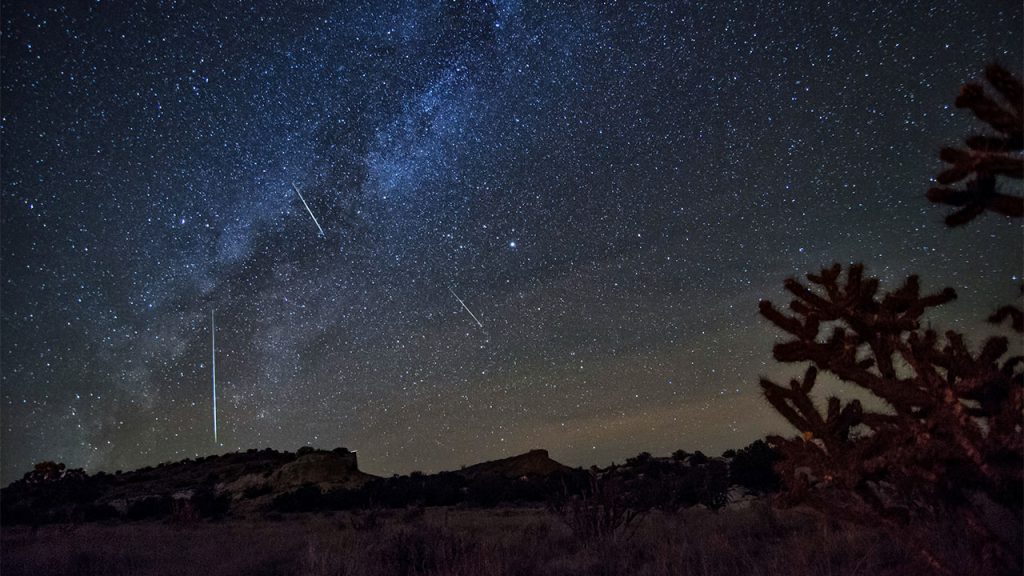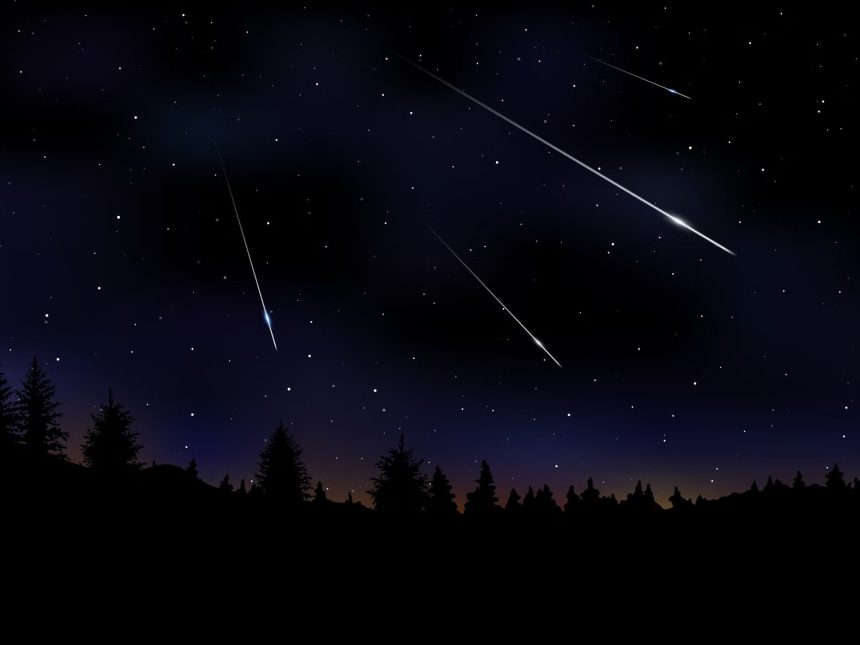Picture yourself on a crisp October night, wrapped in a cozy blanket under the starry sky. The universe is about to put on one of its most enchanting shows the Orionid meteor shower. This reliable and breathtaking event signals sky enthusiasts to connect with the cosmos. In this blog, we’ll explore the science behind meteor showers and share valuable tips to make the most of the upcoming Orionid meteor shower this weekend.

Decoding the Magic of Meteor Showers:
Let’s clarify the beauty of meteor showers. Shooting stars as we fondly call them are not stars at all. Instead, they are meteoroids small rocks journeying through space. These celestial travelers, varying in size from tiny pebbles to occasional heavy objects, collide with our planet as it orbits the Sun. Astonishingly, Earth witnesses around 48 tons of this space debris daily, and when these meteoroids plunge into our atmosphere, they transform into meteors. When Earth encounters these remnants of comets, we witness meteors streaking across the night sky. Each meteor shower has its comet companion, and the Orionid meteor shower, our focus here, is intimately linked with the renowned Halley’s comet.
While you may have missed its spectacular passing in 1986, you can still catch a hint of its legacy through the annual Orionid meteor shower. As Halley’s comet approaches the Sun, it releases gas, leaving behind a trail of celestial rubble. When Earth intersects this trail, we are treated to the Orionid meteor shower, a celestial marvel that requires no special equipment to appreciate.
Pro Tips for Orionid Meteor Shower Watching:
- Perfect Timing: To make the most of this year’s Orionid meteor shower, set your alarms for the hours just past midnight on Sunday, October 22. According to the American Meteor Society, this is when the meteor rates are expected to peak. Although the Orionids generally reach their zenith in mid-October, meteors can still be observed before and after this peak, albeit in smaller numbers.
- Ideal Location: Light pollution is the stargazer’s adversary. Seek out a spot that’s far from sources of bright light. If possible, choose a location with minimal light pollution. A dark, unadulterated sky offers the best chance of spotting numerous meteors.
- Patience, Your Night-Vision Ally: To truly embrace the celestial show, grant your eyes time to adjust to the darkness. This adaptation process takes about 20 to 30 minutes but is essential for capturing even the faintest meteors. Be prepared with warm clothing and a steaming cup of your favorite beverage to keep you comfortable. Avoid any harsh white light sources, which can disrupt your night vision. If you need light, utilize a flashlight covered with a red filter.
- Sky Gazing: Meteor watching is a wondrous activity suitable for everyone. Whether you’re an avid astronomy enthusiast or just someone who appreciates the marvels of the night sky, it provides a chance to step away from the daily hustle and reconnect with the universe. The Orionid meteor shower is a unique occasion to witness the night sky’s beauty. So, venture outdoors and embark on a journey of celestial exploration.
The Orionid meteor shower:
The meteor shower, with its roots in Halley’s comet offers an exceptional opportunity to witness a celestial wonder. That requires nothing more than your presence and a bit of patience. With a touch of preparation and an appreciation for the cosmic wonders above, you can savor a mesmerizing night beneath the stars. So, this weekend, wrap yourself in a warm blanket, venture to a secluded spot and let the Orionid meteor shower paint the night sky with its spellbinding display.


